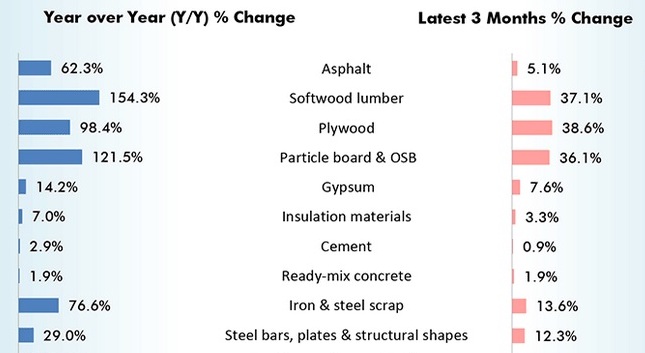Despite a recent drop in price, lumber still costs about 80% more now than it did before the pandemic began.
“Lumber prices may have fallen but they are still elevated, creating new headaches for the critical housing sector,” says an NPR report.
Builders say the premium for lumber is adding tens of thousands of dollars to the price of a new home, NPR says.
The National Association of Homebuilders, in an NAHB Now article entitled, “Building Alternatives to Help Navigate Elevated Lumber Prices,” adds: “As lumber prices remain higher than normal, builders may be eyeing alternatives to wood and different construction methods to help mitigate the impact material costs and supply-chain disruptions are having on their businesses.”
Steel Framing Provides Low-Cost Alternative to Wood
The rise in the price of wooden studs has made the price of steel studs more attractive for homeowners, says Ben Hildebrandt, a principal researcher with the Green Building Technologies department at the Southern Alberta Institute of Technology in Calgary.
When eight-foot wooden studs were $3 or $4 each, Hildebrandt says, steel studs priced at $6.50 a stud were uncompetitively high. Now that wood studs cost around $8.50, framing with steel makes can save money.
- Hildebrandt cites another benefit of using steel studs. Cold-formed steel (CFS) has environmental benefits. Every piece of CFS framing contains recycled content and meets the highest sustainability requirements of all major green building standards and rating programs.
U.S. Construction Material Cost Changes
Producer Price Index Series — May 2021

Source: Bureau of Labor Statistics, ConstructConnect
Texas Developer: ‘Steel Framing is Now Cost-Competitive’
“We are experiencing some significant shifts in the Texas real estate landscape that are already impacting how business will be done in the post-Covid world,” says Michael Kennedy, capital markets principal at Avison Young and development principal at Altera Development.
In conversations with local developers, landlords and investors, Kennedy found an overall rise in construction prices is affecting the market.
“We are currently seeing soaring construction materials costs, especially lumber,” says Kennedy. “In a recent meeting with my friends at Phoenix Construction, I learned that steel framing is now cost-competitive with wood framing.”
‘We Started Pricing Out’ Steel Studs
Chad Veldkamp, partner at Grand Rapids-based Construction Simplified, says some projects have been delayed because of high lumber costs.
Lumber typically makes up about 10 percent of a project’s budget, Veldkamp says. The doubling of prices in the past year caused a significant increase in overall project costs from when they were originally bid out, he says.That has led to the need to reconfigure projects.
“We’ve had to start looking at alternative types of building,” Veldkamp says. “On the lumber side, we started pricing out buildings using structural steel studs, sometimes because of availability or cost. Previously, lumber was always a cheaper option, but that started to swing the opposite way.”
Construction Simplified has also turned to steel beams for building structural support that have been easier to acquire compared to more conventional steel bar joists, Veldkamp says.
Steel Capacity Rising
Larry Williams, executive director of the Steel Framing Industry Association (SFIA) said shipments of CFS studs and track are currently at healthy levels.
“We’ve made it a year through this pandemic, so to see the overall steel numbers ticking upward in 2021 is good,” Williams said. “Shipments are moving in the right direction, and cold-formed steel providers I speak to are all optimistic.”
Steel shipments continue to increase in 2021, as the U.S. steel capacity utilization rate reached 83.0% at the beginning of July 2021, the American Iron and Steel Institute reports.
- Steel production the week ending on July 3, 2021, for example, totaled 1,842,000 net tons
- The 1,842,000 net tons output marked a 41.0% jump year over year
- Output year to date reached 46,896,000 net tons at a steel capacity utilization rate of 79.0%
Additional Resources:
- The Pandemic Moves the Construction Industry Closer to Technology
- How to Build a Profitable Cold-Formed Steel Factory
- Urban Infill Project Saves $1.7 Million with Steel Framing
Article cited by BuildSteel.org
